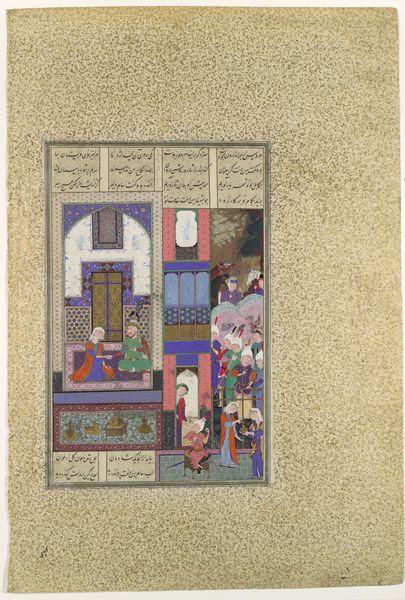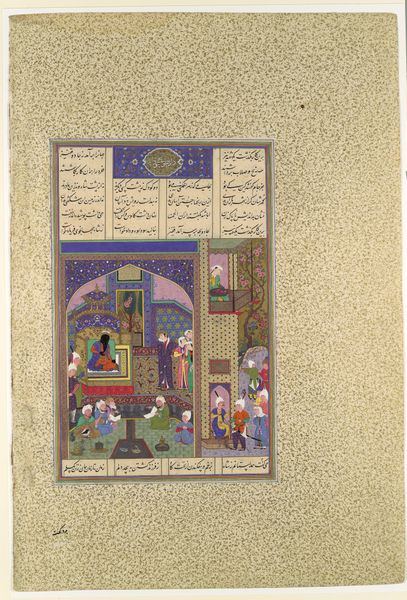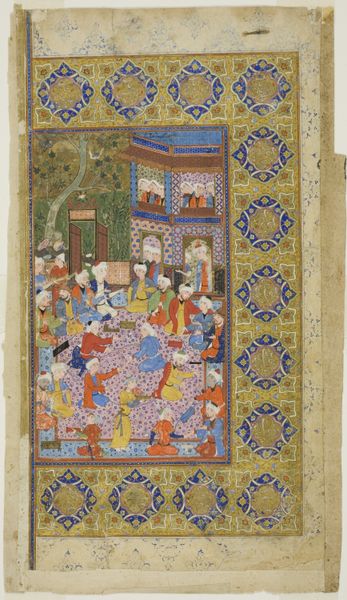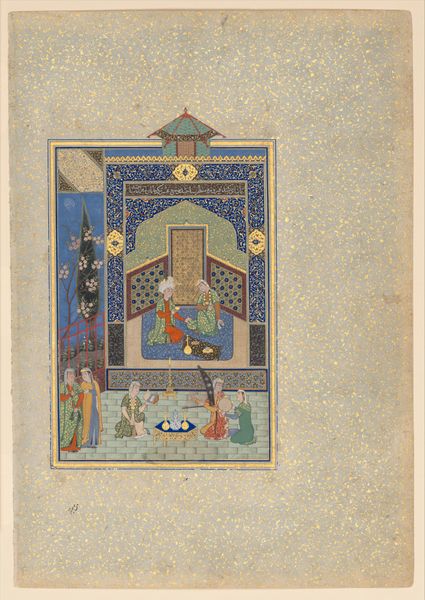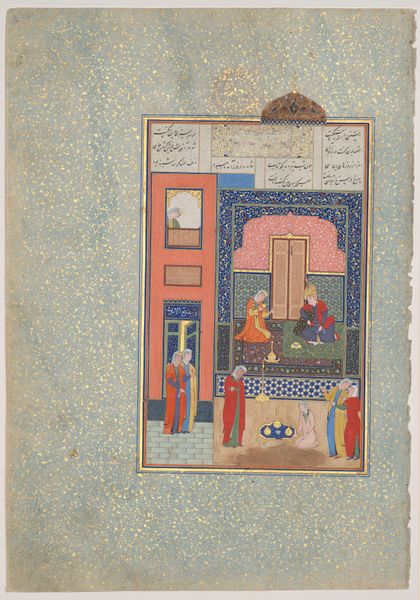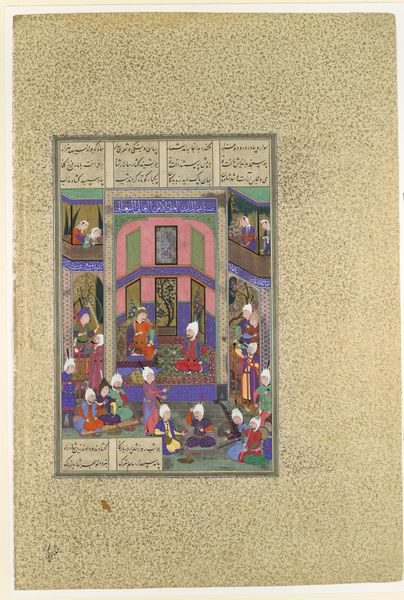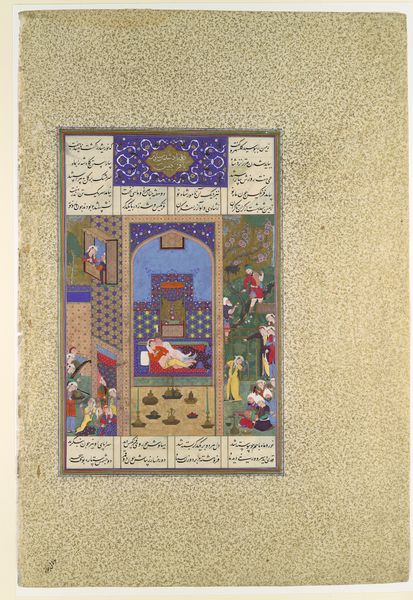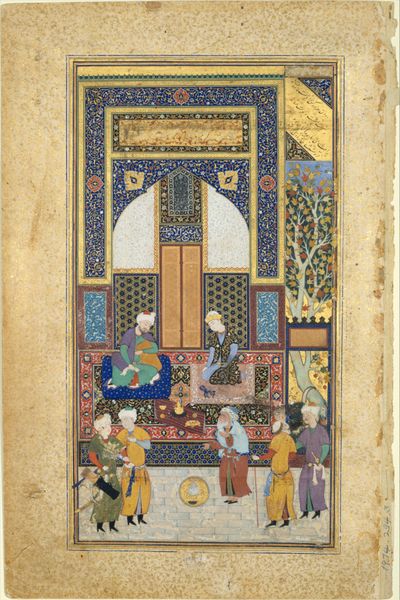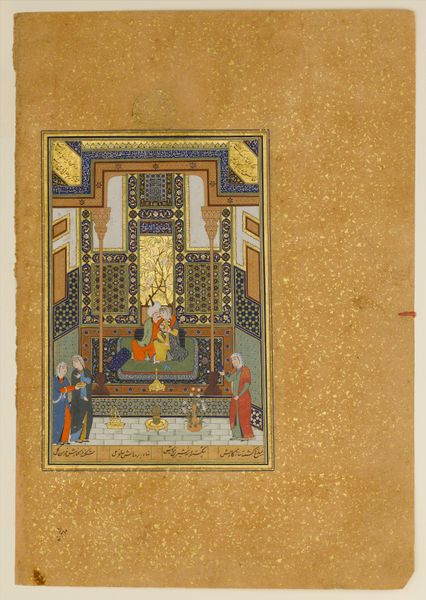
"Bahram Gur in the Yellow Palace on Sunday", Folio 213 from a Khamsa (Quintet) of Nizami of Ganja 1500 - 1550
0:00
0:00
tempera, painting
#
portrait
#
narrative-art
#
tempera
#
painting
#
asian-art
#
figuration
#
historical fashion
#
men
#
islamic-art
#
history-painting
#
miniature
Dimensions: Painting: H. 7 1/2 in. (19.1 cm) W. 4 1/2 in. (11.4 cm) Page: H. 12 5/8 in. (32.1 cm) W. 8 3/4 in. (22.2 cm) Mat: H. 19 1/4 in. (48.9 cm) W. 14 1/4 in. (36.2 cm)
Copyright: Public Domain
Editor: So, this tempera on paper piece is titled "Bahram Gur in the Yellow Palace on Sunday" and is a folio from a Khamsa of Nizami of Ganja, created sometime between 1500 and 1550. It’s currently at the Met. My first thought is that it's incredibly detailed, like a peek into another world. What do you see in this piece, in terms of its imagery? Curator: What strikes me is the conscious use of yellow – repeated in the architecture and garments. Color symbolism in Persian miniatures carries enormous cultural weight. Yellow, here, isn’t just a color; it’s an emblem. It represents the sun, the life-giving force, and on a deeper level, the alchemical transformation. Does that register for you? Editor: I hadn’t thought of it that way, I was drawn in by the outfits but thought that maybe it had to do with available dyes. It makes more sense to understand that these repeating motifs could mean something deeper than what first appears. How did color and dress become imbued with significance like this? Curator: Courtly life, particularly in the Islamic world, functioned with carefully orchestrated displays. Clothing indicated status, allegiance, even aspirations. Think of it as visual language: The color, cut, and embellishments of garments declared one's position and desires. This interplay of textiles, color, and hierarchical positioning shaped not only identity but also cultural memory. Each color connects us back to a complex network of social norms and artistic intentions, such as we see in "Bahram Gur..." Editor: Wow, it gives a whole new meaning to what I considered "fashion". Now, when I see the composition and these characters again, it’s a story of not just history, but one that resonates with significance in social, cultural, and, dare I say, psychological ways. It reflects the symbolic mind. Curator: Precisely. And by looking, you are deciphering the echoes of culture made visible.
Comments
No comments
Be the first to comment and join the conversation on the ultimate creative platform.
